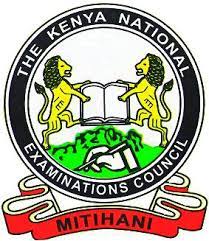
SECTION A (32 marks)
Answer ALL the questions in this section.
1. State four ways in which e-mail has made it easier for managers to communicate to employees. (4 marks)
2. State four reasons why a receiver should decode a written message correctly. (4 marks)
3. Outline three reasons why the minutes of a meeting must be presented in the subsequent meeting. (3 marks)
4. State how a sender can overcome the following barriers to effective communication:
(i) language;
(ii) time;
(iii) prejudice.
(3 marks)
5. Identify three mistakes that can make a job applicant fail an interview. (3 marks)
6. Outline three reasons why organizations are increasingly using the television to market their products. (3 marks)
7. State three ways through which a writer can portray courtesy in an official letter. (3 marks)
8. List three benefits an organization earns when a manager handles difficult customers diplomatically. (3 marks)
9. Out line three advantages of employing positive interpersonal communication in the office.
(3 marks)
10. State three types of meetings that can be held in an organization. (3 marks)
SECTION B (68 marks)
Answer ALL the questions in this section.
11. (a) Explain three factors a manager should consider when deciding on the official channels of communication to use within the office. (6 marks)
(b) One of your firm’s long serving employees wishes to join another organization. He has requested you, as the Assistant Human Resource Manager, to write a recommendation letter for him. Write the letter. (12 marks)
12. (a) Agiza Communication Limited will hold its annual performance appraisal for all the employees tn a week’s time. As the Assistant Office Manager, write a memorandum notifying the employees about the exercise. (10 marks)
(b) Explain three reasons why a manager may choose to call for a meeting to discuss issues affecting the employees of an organization. (6 marks)
13. You work as the Transport Manager for a public transport company. The company has been experiencing challenges retaining its conductors for long which is negatively affecting the business. The management has asked you to investigate why the conductors are leaving and write a report giving your recommendations. Assume that you have completed the investigations and write the report. (16 marks)
14. Read the passage below and then answer the questions that follow it.
• Many Kenyans are seeking ways of owning property in the form of land and housing.-‘[‘here are various ways of acquiring such property. One such method is through joint venture agreements.
’Joint ventures are agreements between land owners and investors aimed at developing unused land by building houses and other facilities on the land,-There are various steps involved in a joint venture agrcement.’First, the land owner takes the investor for a site visiriso that the investor and his team can inspect the land and establish its viability. They look at the infrastructure, size and shape of the land, ground level, neighbourhood, by-laws and proximity io basic amenities such as hospitals.’This enables the investor to determine the most appropriate type of development for that particular parcel of land.’ coriS’
After visiting the site and deciding on the nature of development to be undertaken, the investor makes a proposal to the land owner. This step involves offering a percentage of the built-up area to the land owner. These percentages are arrived at after taking into account factors such as the cost of the land, the cost of construction, escalation in cost of construction, administrative fees and the selling price of the completed units in the project. Land owners who do not want to get involved in the day-to-day running of the project, or to be responsible for any losses associated with the project, prefer this arrangement. If the land owner accepts the investor’s proposal, the
next step involves starting the formalities of drafting the main agreement. At this stage, the land owner avails copies of the title documents for verification by the investor’s lawyer.
‘ Once the investor’s lawyer approves the title, he then makes a draft copy of the joint development contract; In this step, the terms and conditions of the development are lai^ down and presented to the land owner for approvak Usually, the land owner gets his or her lawyer to study the contract before approving it. If everything is okay, the contract is signed by both parties, stamped and, in most cases, registered under the Registration of Documents at the Ministry of Lands. Once the joint venture agreement has been signed,’the next step is to form a special-purpose company, whose aim is to implement the agreement. The new company formed should be
registered as a private limited company under the Companies Act of the Laws of Kenya. After formation of the company, the next step is the registration of the transfer of the land in favour of the newly formed company. To facilitate this step, the land owner avails to the lawyer all the relevant deeds and documents.
• The registration then leads to hiring of a project architect who prepares a plan for the project. ‘ The land owner has to approve the plan after which it is submitted to the government authorities for approval. Once the approval by the relevant bodies has been received, development – which is the final step – begins. At this juncture, some investors start placing adverts in the local dailies
indicating availabili ty of the houses for sale.
•On completion of the project, the houses allocated to the landowner arc handed over to him or her..
The landowner.is free to sell any of the houses allocated to him or her at any stage of the construction, or even after completion. The formula for sharing profits from the project will have been negotiated and agreed upon before the signing of the agreement which clearly spells out the terms.